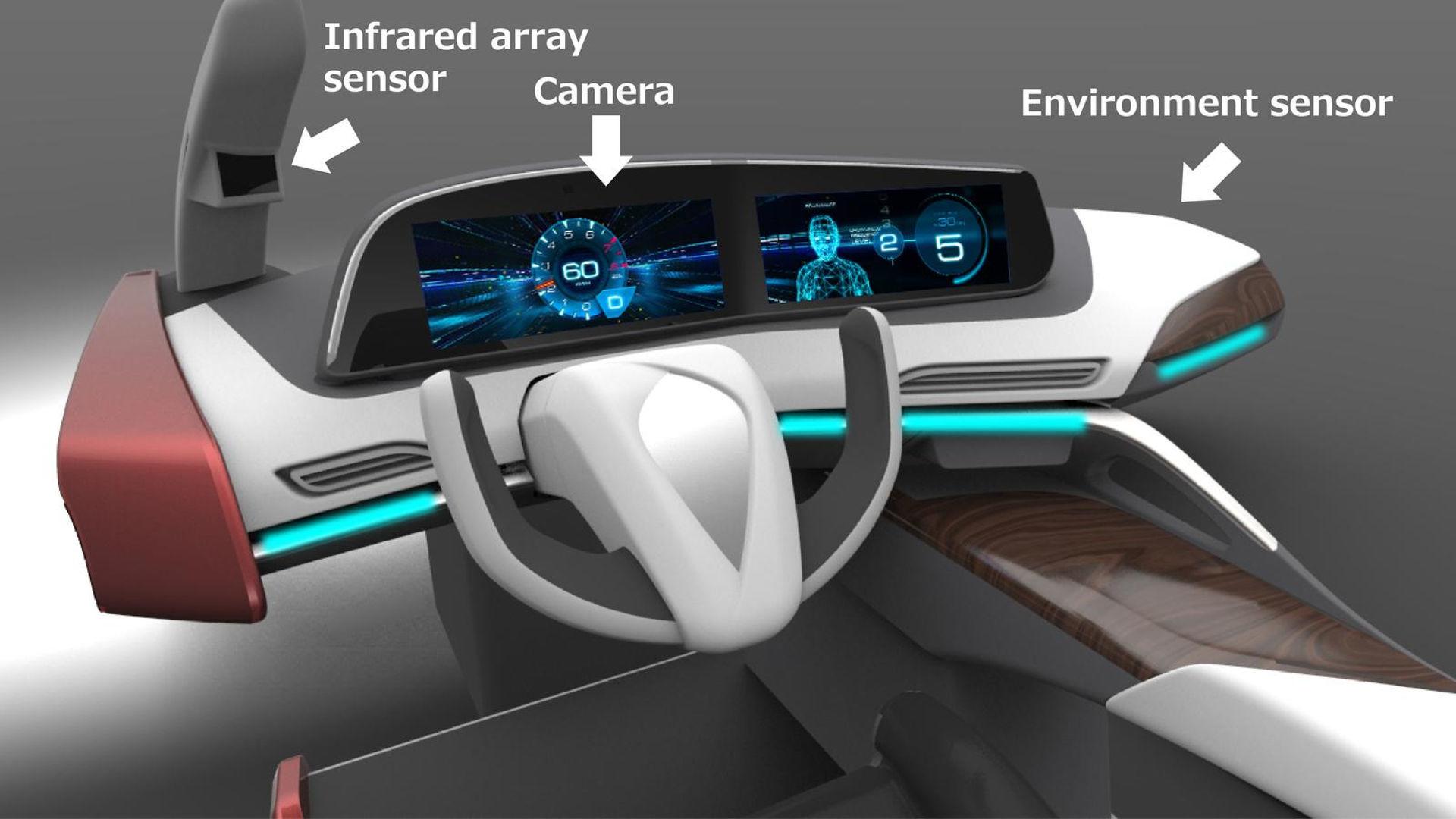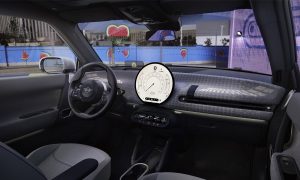Yes, we already have carmakers offering drowsiness detection technology. Mercedes-Benz’s Attention Assist, BMW’s Active Driving Assistant, Ford’s Driver Alert System, VW’s Driver Alert System, Volvo’s Driver Alert Control, they all can alert the driver if he/she starts to fall asleep.
But all these systems primarily analyse the driver’s steering inputs in order to determine any fatigueness. Panasonic’s tech goes on to check the driver’s blinking features and facial expressions captured by an in-vehicle camera, and processing these signals using artificial intelligence.
Additionally, the system uses an infrared array sensor to detect the driver’s level of thermal sensation (sensing of warm and cold).

Blinking features and facial expressions
The company claims to have compiled a database of various measurements on drowsiness and biological signals, and has analyzed from a physiological standpoint, the relationship between about 1,800 parameters related to blinking features and facial expressions. Based on the results of an analysis of drowsy expressions compiled during joint research with the Ohara Memorial Institute for Science of Labour, a public interest foundation, Panasonic has developed an artificial intelligence capable of estimating an individual’s drowsiness level.
Collecting in-vehicle environment data
Panasonic says that generally, people rarely become drowsy in a cool and bright environment, but can easily become drowsy in a warm and dim environment. Therefore, it is assumed that drowsiness depends on in-vehicle environmental factors, such as temperature and brightness. However, some people wear a lot of clothes while others wear less at the same temperature. Such variations in human behaviour make it difficult to estimate people’s drowsiness based only on the ambient temperature.
A joint research has been conducted with Chiba University, which revealed that heat loss from a person’s body is correlated with the person’s drowsiness after prescribed time elapses, regardless of how much clothes the person wears. Panasonic claims to have also developed a contactless technology to measure heat loss from a person’s body with the company’s original infrared array sensor Grid-EYE. In addition, the company has identified the effect of the elapsed time and the surrounding brightness, which is measured by an environment sensor, on a person’s level of drowsiness.
These results have made it possible to predict how a person’s current drowsiness can change by means of heat loss from the body (measured without contact) and the surrounding brightness.
Monitoring the driver’s level of thermal sensation
Through joint research with Nara Women’s University, Panasonic has developed a technology to estimate the thermal sensation. By applying the infrared array sensor Grid-EYE, an individual’s level of thermal sensation can be constantly monitored as an optimum means of controlling temperature, for example, an air conditioner. This allows a person to stay comfortably awake.
When a driver’s current drowsiness level is detected as high, a sound alarm or a command to rest is issued.

Leave a Reply
Note: Comments that are unrelated to the post above get automatically filtered into the trash bin.








































